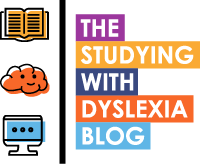I had a conversation the other day with a colleague about the word 'Dyslexia'. It seemed odd that such a weird word would be used to describe a condition which is stereotyped because of the challenges experienced with reading and writing.
The conversation went on and we also talked about Dyspraxia and Dyscalculia too. These are other conditions that aspects of are often a part of a diagnosis of dyslexia..
When a dyslexia test is performed these other conditions are often looked for and listed in the assessment report.
I thought that it might be useful to provide a definition for all three of those specialist 'D's '.
Dyslexia
The British Dyslexia Association published the video below that is a brilliant explainer for dyslexia.
On their website they define Dyslexia as:
“Definition of dyslexia:
The BDA has adopted the Rose (2009) definition of dyslexia:
Dyslexia is a learning difficulty that primarily affects the skills involved in accurate and fluent word reading and spelling. Characteristic features of dyslexia are difficulties in phonological awareness, verbal memory and verbal processing speed. Dyslexia occurs across the range of intellectual abilities. It is best thought of as a continuum, not a distinct category, and there are no clear cut-off points. Co-occurring difficulties may be seen in aspects of language, motor co-ordination, mental calculation, concentration and personal organisation, but these are not, by themselves, markers of dyslexia. A good indication of the severity and persistence of dyslexic difficulties can be gained by examining how the individual responds or has responded to well-founded intervention.
In addition to these characteristics:
The British Dyslexia Association (BDA) acknowledges the visual and auditory processing difficulties that some individuals with dyslexia can experience, and points out that dyslexic readers can show a combination of abilities and difficulties that affect the learning process. Some also have strengths in other areas, such as design, problem solving, creative skills, interactive skills and oral skills.”
Dyspraxia
The Dyspraxia Foundation has this definition on it's website.
“Dyspraxia, a form of developmental coordination disorder (DCD) is a common disorder affecting fine and/or gross motor coordination in children and adults. It may also affect speech. DCD is a lifelong condition, formally recognised by international organisations including the World Health Organisation. DCD is distinct from other motor disorders such as cerebral palsy and stroke, and occurs across the range of intellectual abilities. Individuals may vary in how their difficulties present: these may change over time depending on environmental demands and life experiences.
An individual’s coordination difficulties may affect participation and functioning of everyday life skills in education, work and employment.
Children may present with difficulties with self-care, writing, typing, riding a bike and play as well as other educational and recreational activities. In adulthood many of these difficulties will continue, as well as learning new skills at home, in education and work, such as driving a car and DIY.
There may be a range of co-occurring difficulties which can also have serious negative impacts on daily life. These include social and emotional difficulties as well as problems with time management, planning and personal organisation, and these may also affect an adult’s education or employment experiences.
Many people with DCD also experience difficulties with memory, perception and processing. While DCD is often regarded as an umbrella term to cover motor coordination difficulties, dyspraxia refers to those people who have additional problems planning, organising and carrying out movements in the right order in everyday situations. Dyspraxia can also affect articulation and speech, perception and thought.”
Dyscalculia
The British Dyslexia Association also provide useful information about Dyscalculia.
“Dyscalculia is a specific and persistent difficulty in understanding numbers which can lead to a diverse range of difficulties with mathematics. It will be unexpected in relation to age, level of education and experience and occurs across all ages and abilities.
Mathematics difficulties are best thought of as a continuum, not a distinct category, and they have many causal factors. Dyscalculia falls at one end of the spectrum and will be distinguishable from other maths issues due to the severity of difficulties with number sense, including subitising, symbolic and non-symbolic magnitude comparison, and ordering. It can occur singly but often co-occurs with other specific learning difficulties, mathematics anxiety and medical conditions.”
You can visit the BDA’s specific page for Dyscalculia here.
Final Comments
I hope that this has been a helpful insight into the different conditions called Dyslexia, Dyspraxia and Dyscalculia.
As I have spent more time supporting families who have children and parents experiencing Dyslexia, I have developed my understanding of how understanding what these terms represent is important, but equally we must understand that each of these terms are umbrella terms for a specific range of strengths and weaknesses. If one child has a diagnosis of Dyslexia then their needs and their strengths will not be the same as another child with a diagnosis of Dyslexia. Every child and adult is differently affected by how these conditions present. Equally, we must remember that these conditions are closely linked and often overlap in terms of the challenges experienced. These are referred to as ‘Co-Occuring Differences’ and also include Autism Spectrum Disorder and ADHD/ADD. For parents new to this, it can at first be terrifying. The use of ‘labels’ makes it sound like someone with a diagnosis has a huge problem on their hands but that is far from the truth.
It is more helpful to think about the diagnosis as a way of understanding strengths and weaknesses but to use the labels to leverage getting support. A person who experiences any of these conditions only has a challenge if they are put into an environment that plays to their weaknesses. This is why it is important to work closely with schools and Local Authorities in order to gain ‘reasonable adjustments’ aka intervention and support, that helps a child to be able to interact within the education system on a fairer basis.




